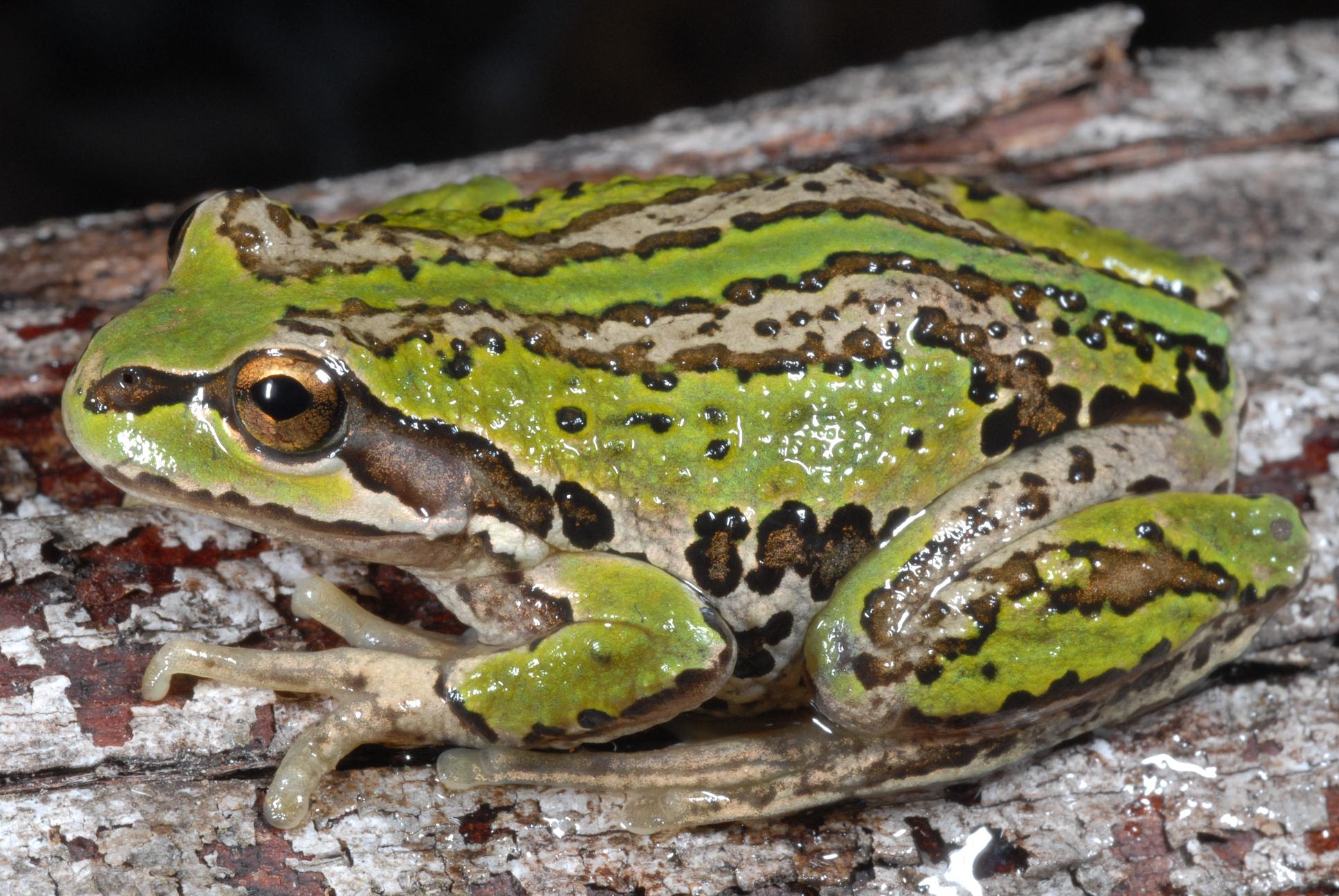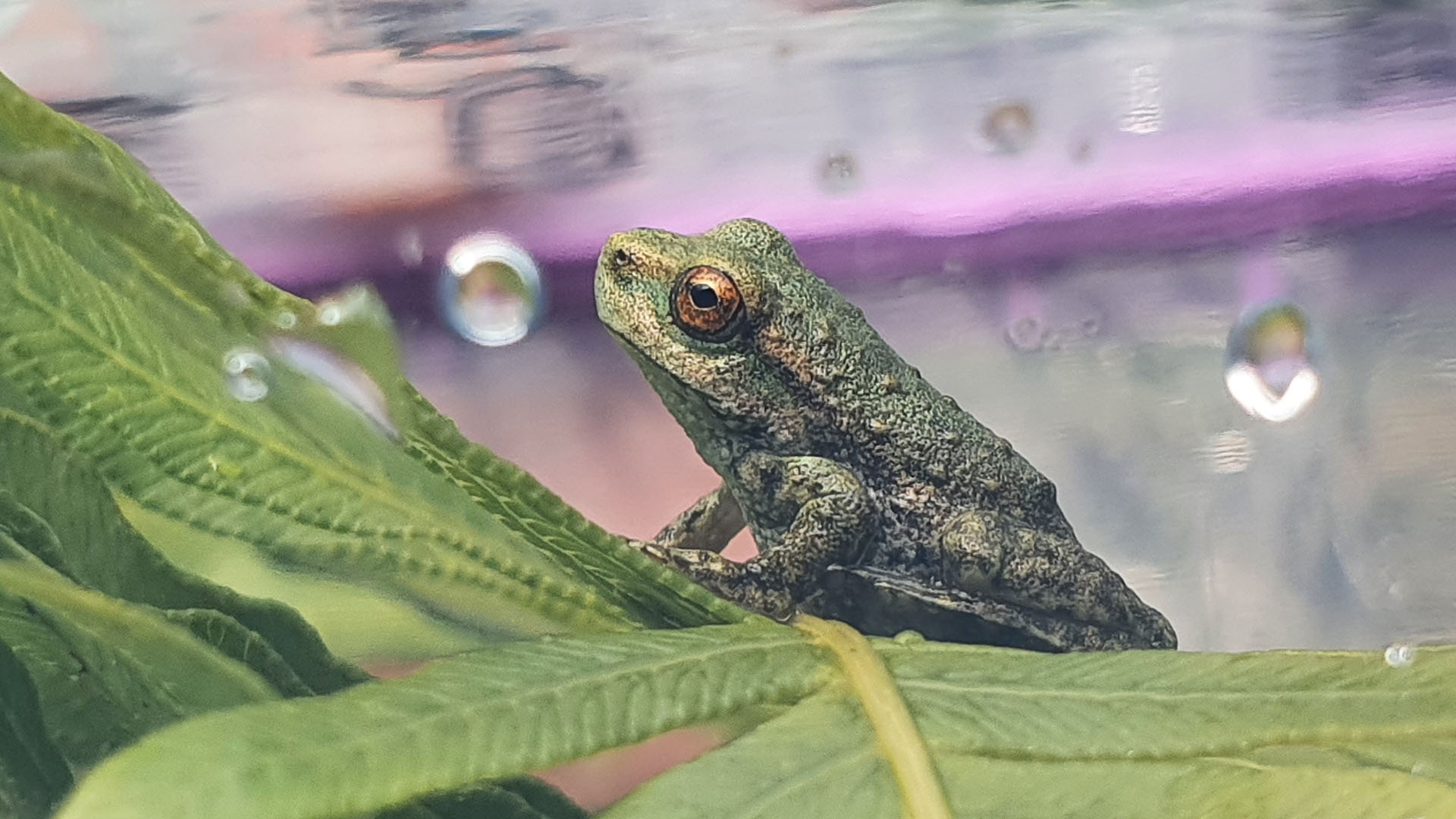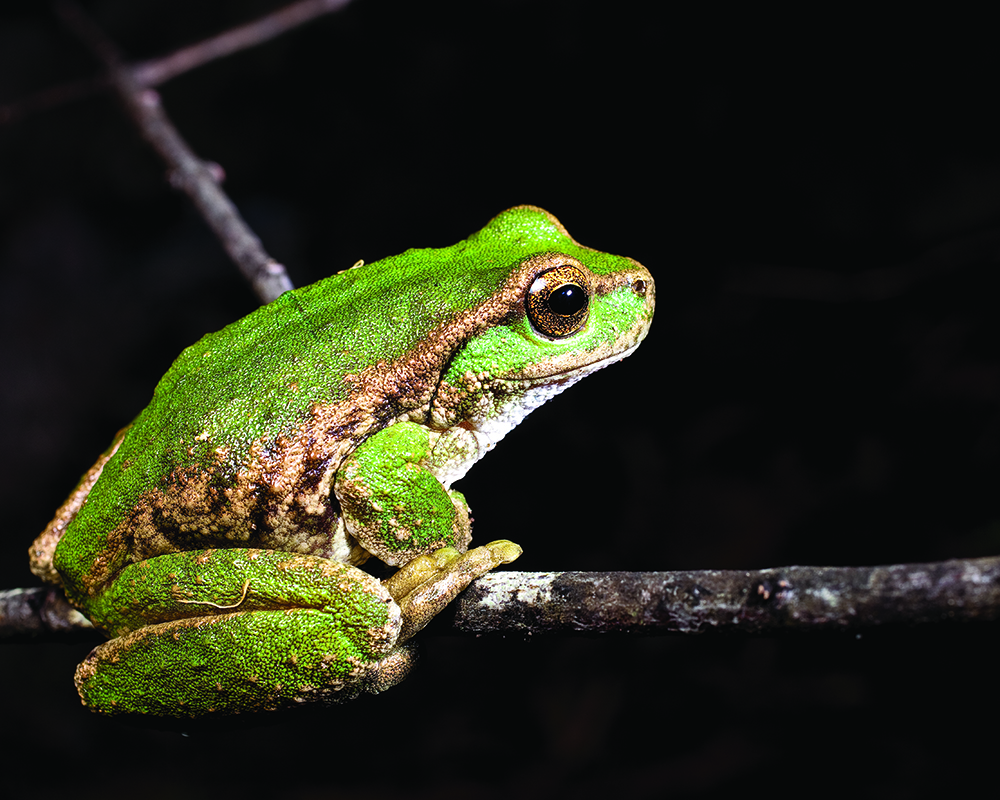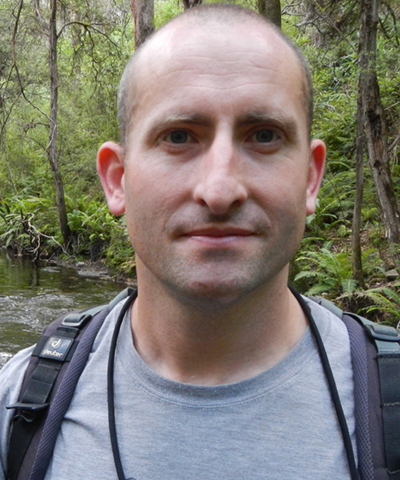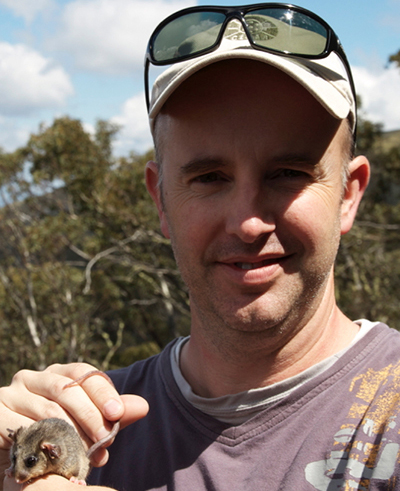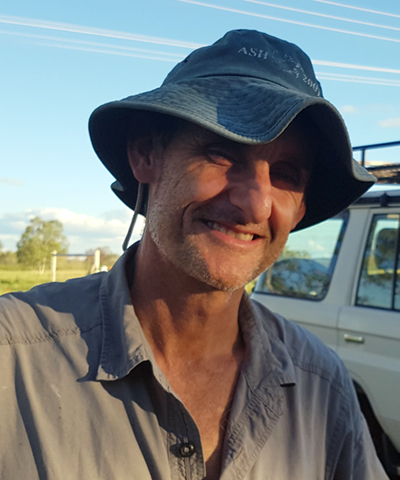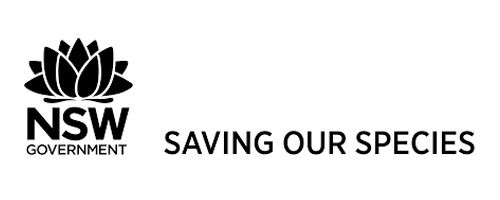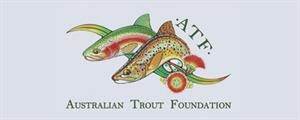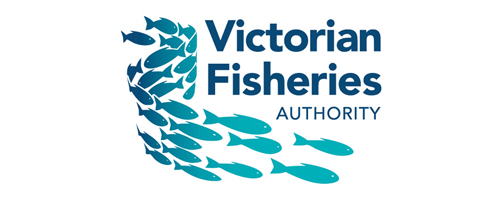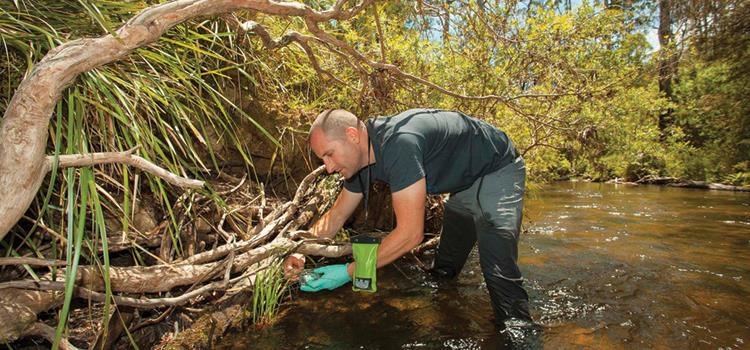
Project: 1.4.1
Saving threatened frogs with refuges from disease, fish predation and fragmentation
Project Leaders: Matt West , Ben Phillips
Research in Brief
This project will identify and create safe havens for the Endangered spotted tree frog and threatened bell frog species. Disease caused by chytrid fungus, predation by non-native fish and habitat loss are all contributing to these species’ declines.
Environmental conditions that restrict chytrid impacts on frogs and the frog’s critical habitat requirements will be identified by synthesis of existing data and through targeted research.
By working with recreational fishing groups, we hope to locate sites where non-native fish impacts on frogs are already low or can be reduced. Experimental adaptive management strategies will be examined at selected safe havens.
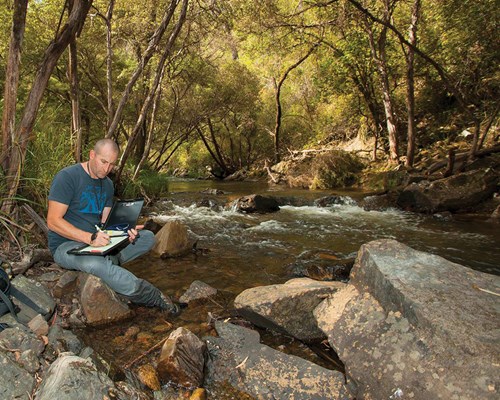
Dr Matt West at one of the study locations. Photo: Michael WIlliams - It’s a Wildlife
Research areas
Chytrid fungus
Chytrid fungus cannot yet be eliminated from sites, particularly in complex environments. Frog populations can persist at some sites when environmental conditions restrict the growth and survival of chytrid. Understanding conditions that favour the frogs over the pathogen is key to identifying safe havens for frogs from disease. But this is complicated, as little is known about how chytrid fungus is evolving, and about the number and virulence of strains now infecting native amphibians. Better understanding of these issues is urgently needed to develop chytrid mitigation strategies to halt declines of threatened native frogs.
We are collecting chytrid fungus samples throughout data-deficient regions in southern Australia. Sampling will focus on Victoria and south-west Western Australia but other southern states may also be sampled. We will isolate the fungus with James Cook University, One Health Research Group at the Melbourne Veterinary School and other partners to map the distribution of the strains of the pathogen throughout Australia.
Information gathered will help inform strategies aimed at controlling the spread of the pathogen as well as understanding the ongoing risk posed by the pathogen. This is a key priority of the Threat Abatement Plan for chytridiomycosis, the disease caused by chytrid fungus.
Spotted tree frog
Without intervention, spotted tree frogs (Litoria spenceri) will become extinct. They have already disappeared from 50% of their historic sites in eastern Australia and are rare at all remaining sites. Chytrid fungus and non-native fish predatory fish are the main causes of decline. Unfortunately, spotted tree frogs cannot cope with both threats.
Capitalising on a 26-year monitoring program and newer stakeholder collaborations, we will pursue recovery plan actions to conserve spotted tree frogs. This will include broad-scale monitoring of the species to review the current conservation status, and the effectiveness of current monitoring strategies and triggers for management interventions.
The project will also advance strategies to secure populations at safe havens (also called refuge sites). While chytrid fungus cannot be eliminated from mountain streams, some sites have environmental conditions (particularly warmer ambient temperatures) that are less favourable to the fungus, allowing susceptible frog species to persist at these sites. This project will identify and map sites that provide environmental refuges from chytrid.
Non-native predatory fish species eat spotted tree frog tadpoles and occur at all remaining sites.
In contrast, native fish avoid eating spotted tree frogs. While non-native fish removal is technically feasible, some non-native species like brown and rainbow trout are highly valued by recreational fishers. This project will work collaboratively with recreational fishing groups to understand the value of sites for fishing and identify sites at which non-native fish densities are low or can be reduced. By working together, we will ensure that any management of fish is supported by the community.
On-ground assessments of the short-listed sites will then be undertaken to verify the suitability of sites as refuges for spotted tree frogs. We will then support partners to undertake adaptive management trials including frog translocations and/or fish removal and exclusion at the selected sites. Mark-recapture and occupancy monitoring will be used to evaluate management success.
Other threatened species, such as barred galaxias and Murray spiny cray, are impacted by non-native fish and are also expected to benefit.
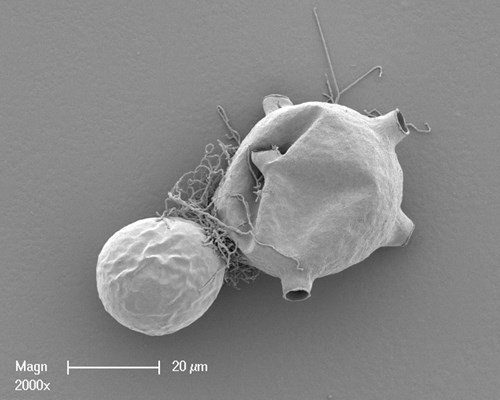
Chytrid fungus. Photo: Matt West
Threatened bell frogs
Threatened bell frogs in eastern Australia, such as the green and golden bell frog and growling grass frog, are also impacted by chytrid fungus and non-native fish and face additional pressure from habitat loss and fragmentation due to urbanisation.
Many groups have been actively collecting data about the green and golden bell frog for over 20 years across multiple regions; however, they have not yet been synthesised. Such work could reveal more information about the threats faced by the frogs and contribute to management strategies for their conservation.
We will assist the New South Wales Department of Planning, Industry and Environment to combine and analyse green and golden bell frog data sets collected across seven regions of New South Wales. Analyses will focus on evaluating population status and threats in each region and results will be used to inform management actions. Partners will undertake management, and we will subsequently evaluate the success of the management interventions.
Research is also being conducted in Western Australia to understand why a closely related bell frog (motorbike frog) seems to be more able to cope with chytrid fungus, non-native fish and habitat loss than the eastern Australian bell frogs. An understanding of the species’ differing responses to these threats may help to inform strategies for management and halt population declines.
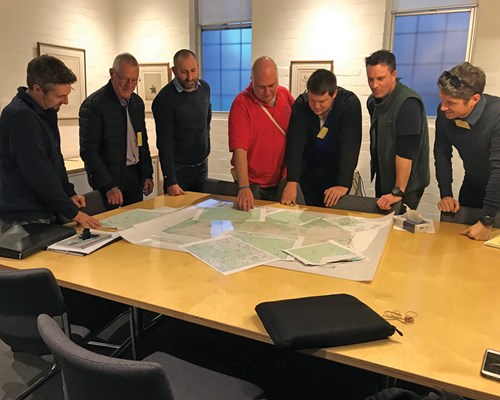
Recreational Fishing Advisory Committee. Photo: Renae Ayres, DELWP
Who is involved?
The project is being led by The University of Melbourne who are collaborating with Zoos Victoria, the Victorian Department of Environment, Land, Water and Planning, the New South Wales Department of Planning, Industry and Environment, the Victorian Fisheries Authority, the Victorian Recreational Fishing Peak Body, the Australian Trout Foundation and Native Fish Australia. James Cook University will manage the collection, culture and genotyping of strains of the chytrid fungus.
Where is the research happening?
The research will take place in southern Australia: in greater Melbourne; across north-eastern Victoria; in the Snowy Mountains and coastal regions of New South Wales; and potentially in South Australia and Tasmania.
When is the research happening?
The project will run for four years until 2021.
Further information
For more information please contact:
Matt West - matthew.west@unimelb.edu.au
Top image: Dr Matt West at one of the study locations. Photo: Michael WIlliams - It’s a Wildlife
